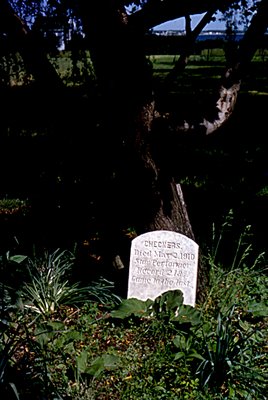Checkers

I spent my first 13 years growing up in and around New Bedford, Massachusettes. We lived in the adjacent Town of Dartmouth, just to the west, "out in the country". When you're talking about places first settled in the 1600's, not all that long after the Mayflower brought the Pilgrims to Plymouth about 40 miles to the north, you're talking about a lot of history. Due east of New Bedford, just across the harbor, is the Town of Fairhaven where this photo was taken.
The land all around had been cleared, first to harvest the timber, then to farm the now cleared land. Small farms dotted the landscape, self sufficient places with a cow or two for milk, a horse to pull the plow, chickens fore eggs and meat, and the farmers raised corn and wheat, squash and pumpkins, a variety of other vegetables, and brought the surplus to town. Roadside stands sold fresh vegetables when I was a child and once a week we'd drive out to buy chickens and eggs, brown tasty ones with bright orange yolks. We'd then take the chickens to be ritually slaughtered and bled so they'd be kosher. When we drove to the beach we'd pickup some fresh vegetables, watermellon, and sweet corn. Believe me, supermarkets don't carry FRESH vegetables. There is a difference!
Flat bed trucks were often driving to town, piled high with chicken crates. The chickens squacked and flapped and carried on in the unexpected 40 MPH breeze as they took their first and last ride. Feathers flew everyplace. If you were behind a truck load of white leghorns the illusion was one of driving through a blizzard. With Rhode Island reds, or the black and white mottled Plymouth Rock chickens, it was just blindness trying to drive behind the truck. You let them get well ahead of you.
Most of thse small farms had been abandoned by the end of the nineteenth century. Trees reclaimed pasture and plowed land alike. Not the huge trees of the original forest but big enough that you knew you were in the woods. As a boy my friends and I loved to go exploring. We'd run across the remains of field stone walls, foundations, fireplaces and chimnies. We were always on the lookout for bits of Indian pottery but the real prize was a flint arrowhead.
And then there were the gravestones out in the middle of the woods. Some were clustered together, with a variety of names, like perhaps many years before there was a church on the site. Other groupings were obviously family, closely related people buried on their farm. Sometimes a favorite dog or horse would be buried complete with its own gravestone. I was walking around a small pond in the 1960's, probably fishing for chain pickerel and yellow perch, when I ran across this stone, a grave marker for a beloved horse that had passed away. The badly faded and discolored Ektachrome was salvaged and restored by Todd Frederick.

0 Comments:
Post a Comment
<< Home